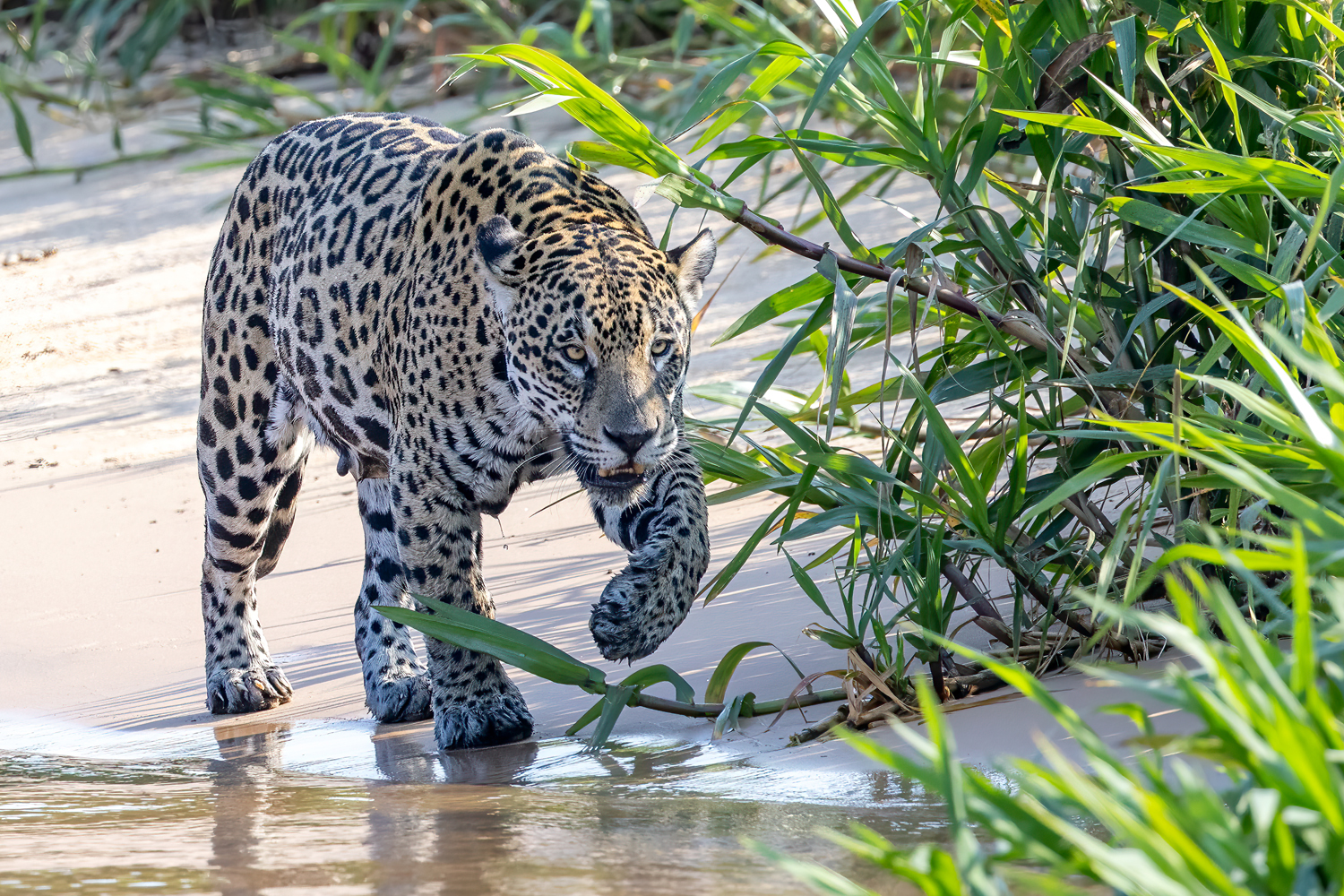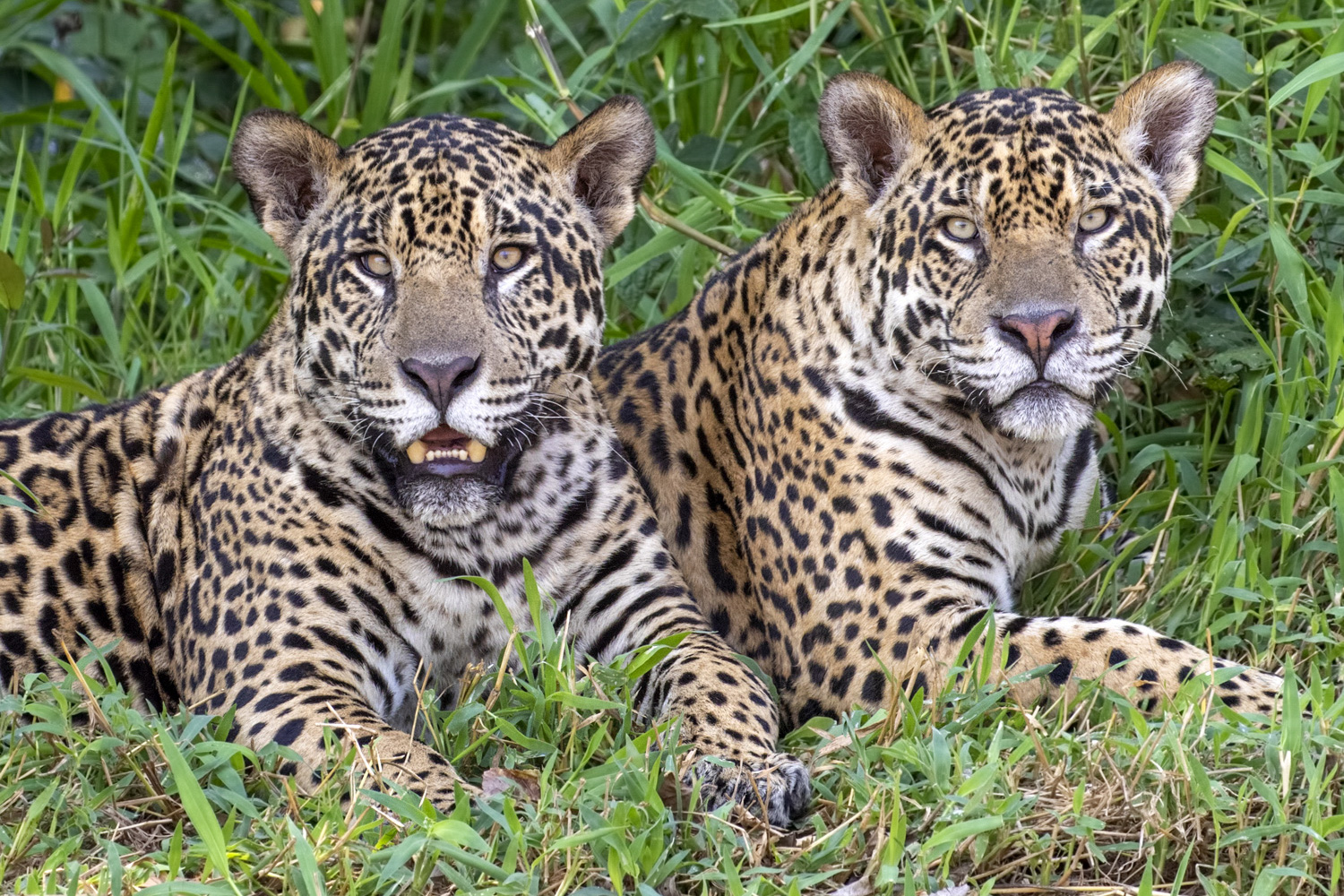Being the third largest cat on the planet and by far the largest cat in the Americas, jaguars are always the main attraction on our Cuiaba River boat trips in Brazil’s Pantanal. And they do not disappoint! In 2022 there were more cubs than ever, more different behaviors witnessed and simply more jaguars than I have ever seen before. We had good photographable jaguars every day the entire season. As awesome as the jaguars are, there is so much more to see and photograph during our jaguar excursions. Anhingas and cormorants were constantly fishing in some of the calmer areas we visited, and it was easy to capture them flipping fish in the air to line them up headfirst for easier swallowing. Brightly colored rufous-tailed jacamars, small insectivores resembling Old World bee-eaters, were easily photographed as they flitted out to catch insects and return to the same perch over and over. Cocoi heron, black-collared hawks, black-crowned night herons, rufescent tiger herons, boat-billed herons, great egrets, and dozens of other birds were ubiquitous and easily photographed every day.
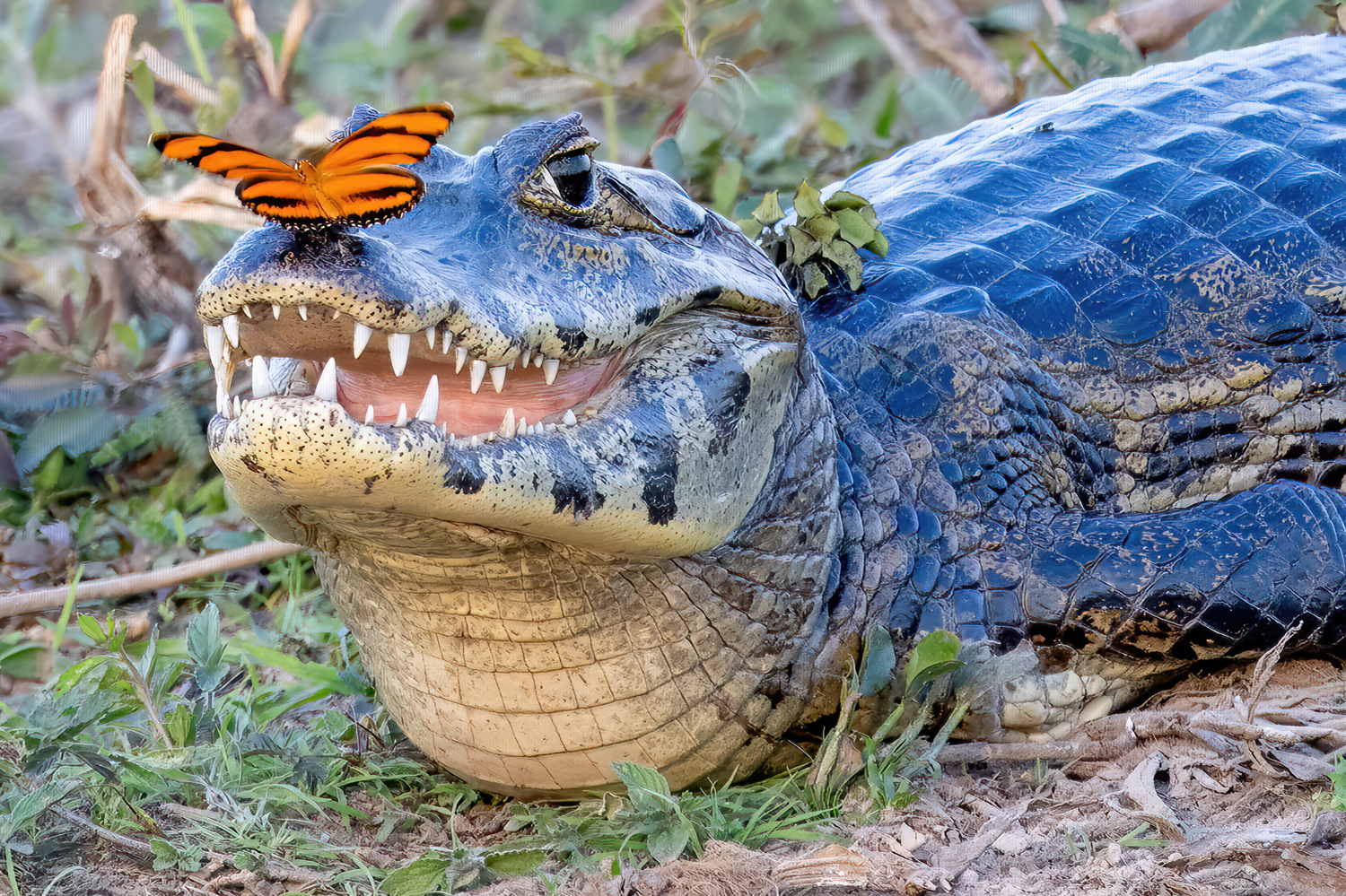
Larger aquatic animals were also easily seen and photographed. Jacaré caiman, basking on the sandbars with jaws agape made wonderful subjects as they were easily approached and didn’t scare easily. Capybara, the world’s largest rodent, were found in small family groups cautiously feeding on aquatic vegetation along the river’s edge. While they look slow, they can move remarkably fast when threatened by an approaching jaguar. Black howler monkeys were seen climbing high in the trees and even the occasional yellow anaconda was spotted along the shore tucked discreetly inside small caves or floating vegetation.

While cruising the unending oxbows of the river, a splash by shore catches our attention. Then another. And still another. We quickly recognize one of our favorite Pantanal subjects, the giant river otter. But this isn’t just one otter. Giant river otters are found in family groups. And this year’s otters were no exception. We would come across this family of five river otters as they were out catching fish, every day. These are the world’s largest otters and can be six feet long from head to tail. They have insatiable appetites and when they are out fishing, their aquatic endeavors last hours. They are powerful swimmers, and their long, stiff whiskers help them to locate fleeing fish in the murky water. One after another, an otter would surface with a fish. If there was a nearby log, they would often take their prize to it so they could rest while eating. Otherwise, they had no trouble at all swimming while crunching down on a fresh fish buffet. When not fishing, the otters would sometimes haul themselves up onto a fallen tree trunk to rest.
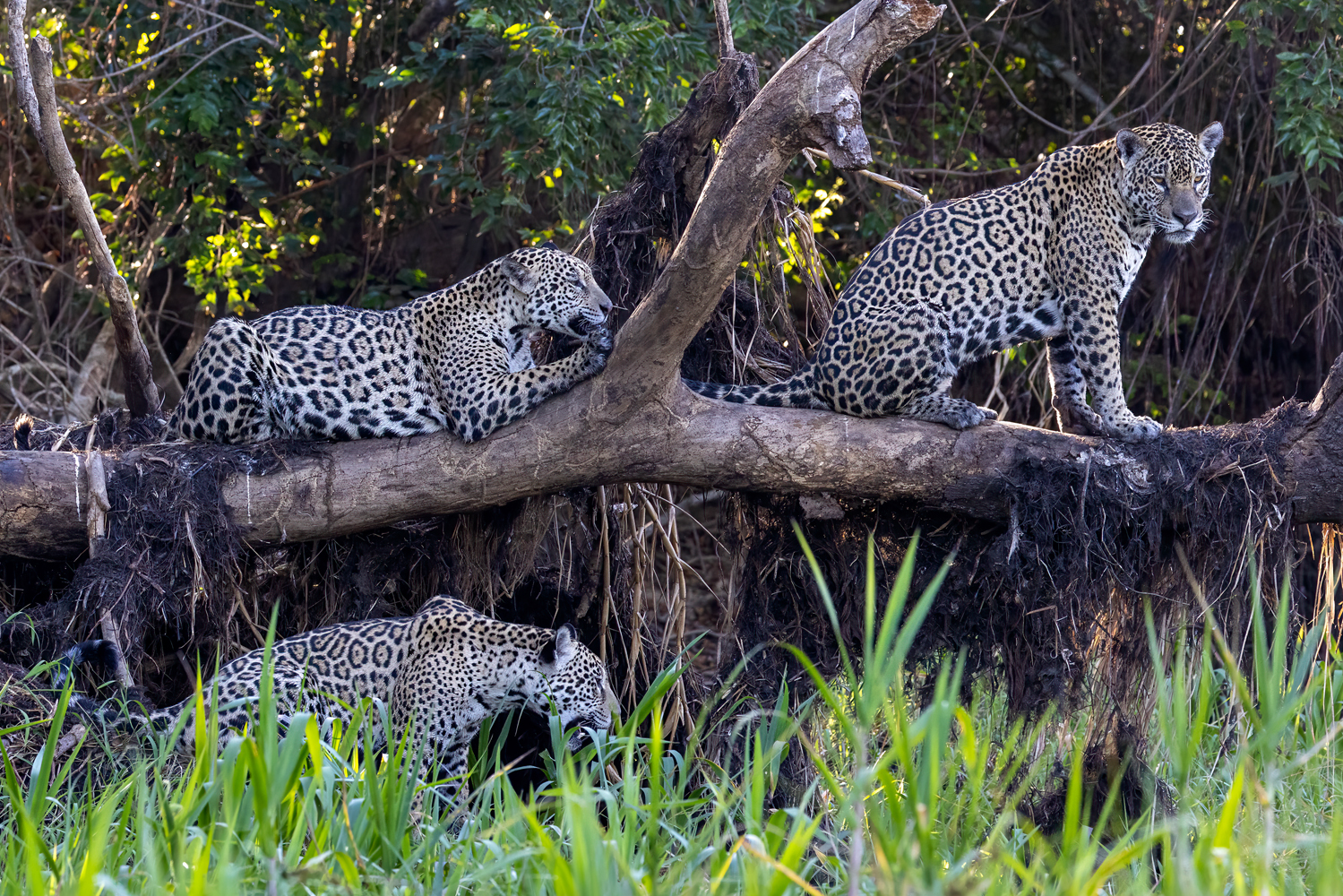
Suddenly, a call comes over the radio. The boats from our lodge stay in close radio contact so when one spots a jaguar, the information is immediately shared. Our driver looks back to make sure everyone is seated. He signals to me that there is a sighting of a mother with her two cubs only about ten minutes away. I give him the nod and we are instantly on our way. We approach 40 miles per hour as the once gentle meandering of the river has now changed into very tight turns. The adrenaline is pumping as we race to the spot. Rounding the final bend, we see a handful of boats already anchored. We slow down so as not to disturb the jaguars or the other people who have come to experience them. The boat drivers have been doing this for years and our drivers know exactly how we need to be positioned to get the best shots. As we approach, we see the mother jaguar lying on the shore while her two grown cubs are frolicking behind her in the trees. Our driver doesn’t anchor. He has been watching this jaguar family all season and knows their behavior well. He knows that the three of them are about to continue walking down the shore. He points to a downed tree about 100 meters away and simply says, “trunk.” I nod to him, and he takes us to the tree. We are the first to arrive. He puts us in the exact spot and makes sure we all have a clear view of the log. He shuts off the engine and we wait. The other boats begin pulling up their anchors and moving slowly in our direction.
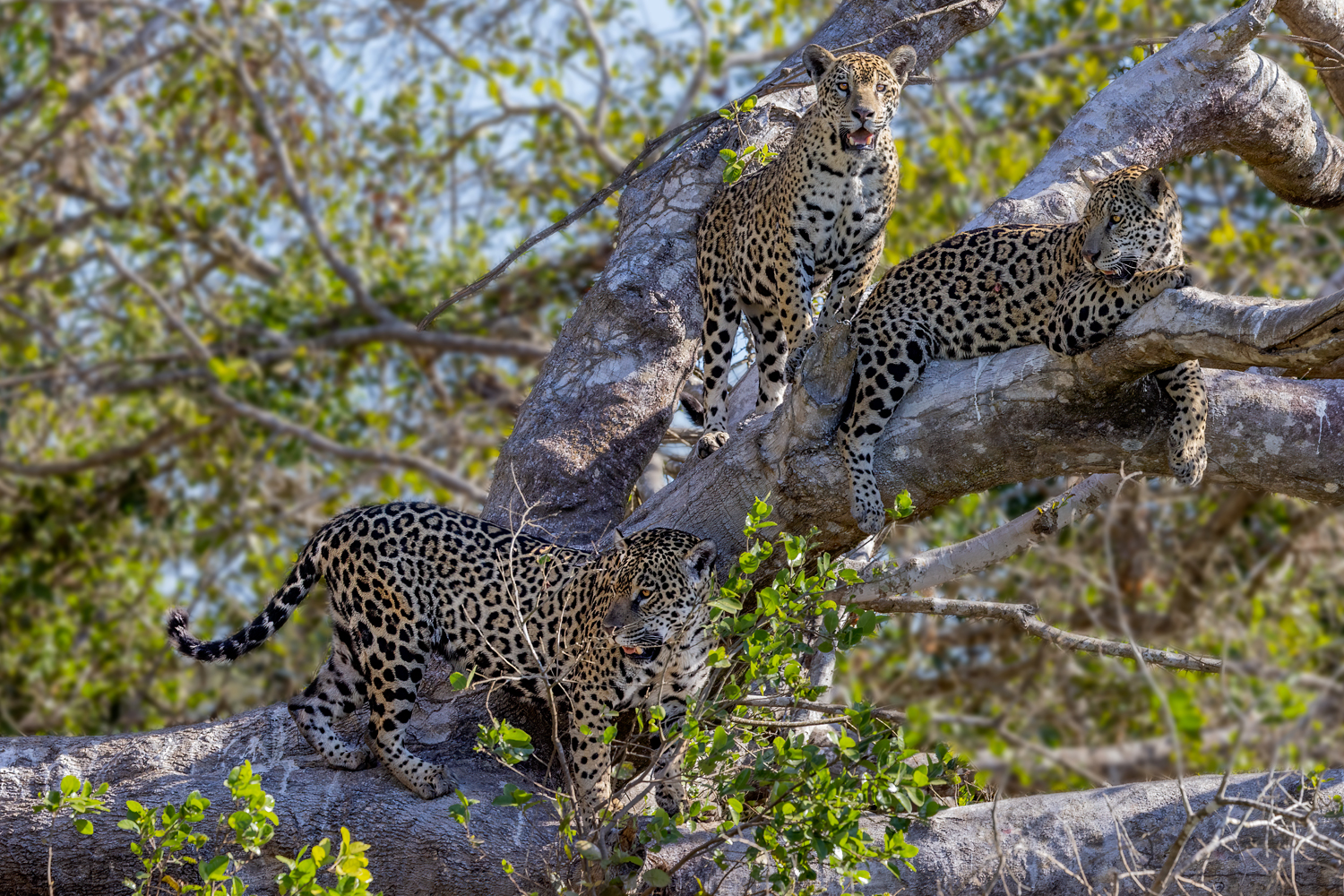
The jaguar trio are on the move. Our driver spots the cats as they move through the trees. He simply says, “coming,” and we pick up our cameras. Almost as if choreographed, the mother jaguar walks out onto the fallen tree. We are a mere 30 feet from her. Her male cub soon follows. The smaller and more cautious female cub brings up the rear so now they are all out on the tree, at eye level, only 30 feet away! Our cameras whir as the three cats vied for position. The female cub jumps down, quickly followed by her brother. Mom stays on the log and settles in for a nap while the cubs wrestle in the tall grass. The other boats pull up. They are getting good shots of the mom. But they are too late for the best action of the entire family out on the log. Our drivers are the absolute best on the river. They can identify the cats and know each one’s habits and patterns. They always put us in the best locations for the best photo opportunities.
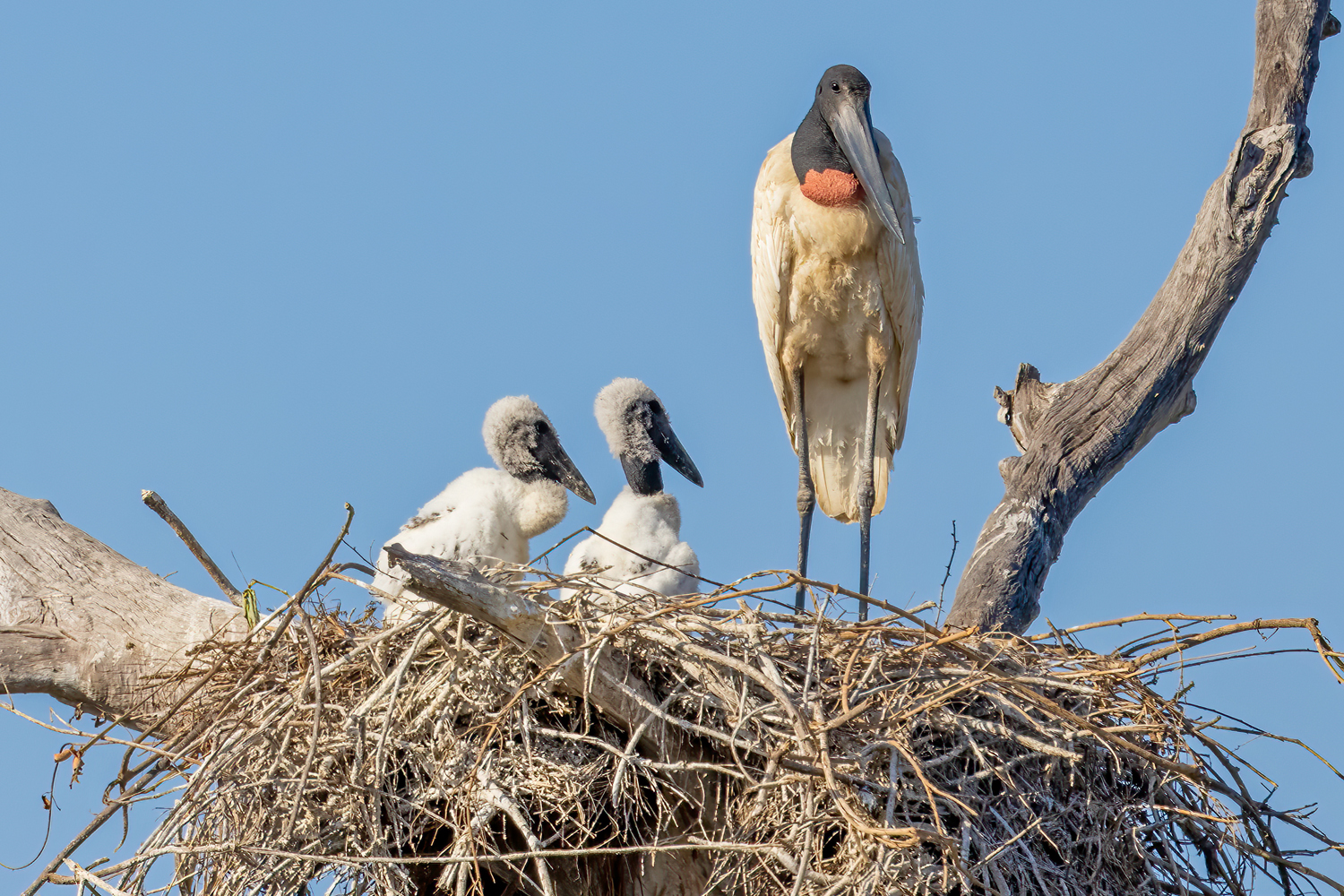
Our morning boat trips usually last between five and six hours. The time flies by. Before you know it, we are headed back to the lodge for lunch. We usually have a bit more than two hours between the morning and afternoon boat trips. Just enough time to download images, charge batteries and have a nice lunch before reapplying sunscreen and heading to the dock. We are back on our boats by 2 P.M. and will stay out until dusk. For the next four days, this is our routine. During part of my time in the Pantanal this year, a cow washed up on the far side of the river about 15 minutes from our lodge. Such a bounty does not go to waste. For several days, two large alpha male jaguars alternated feeding on this carcass. I have known these jaguars for several years. One is named Tusk and the other is Juru. Juru was a very dominant male in 2018 and 2019. He is a very skilled hunter and I’ve seen him catch caiman and capybara. Tusk arrived in the area in 2019. He was known to have an aggressive streak and would bluff charge the boats if he felt they were too close. He has since mellowed and now is much more tolerant of the boats and people.
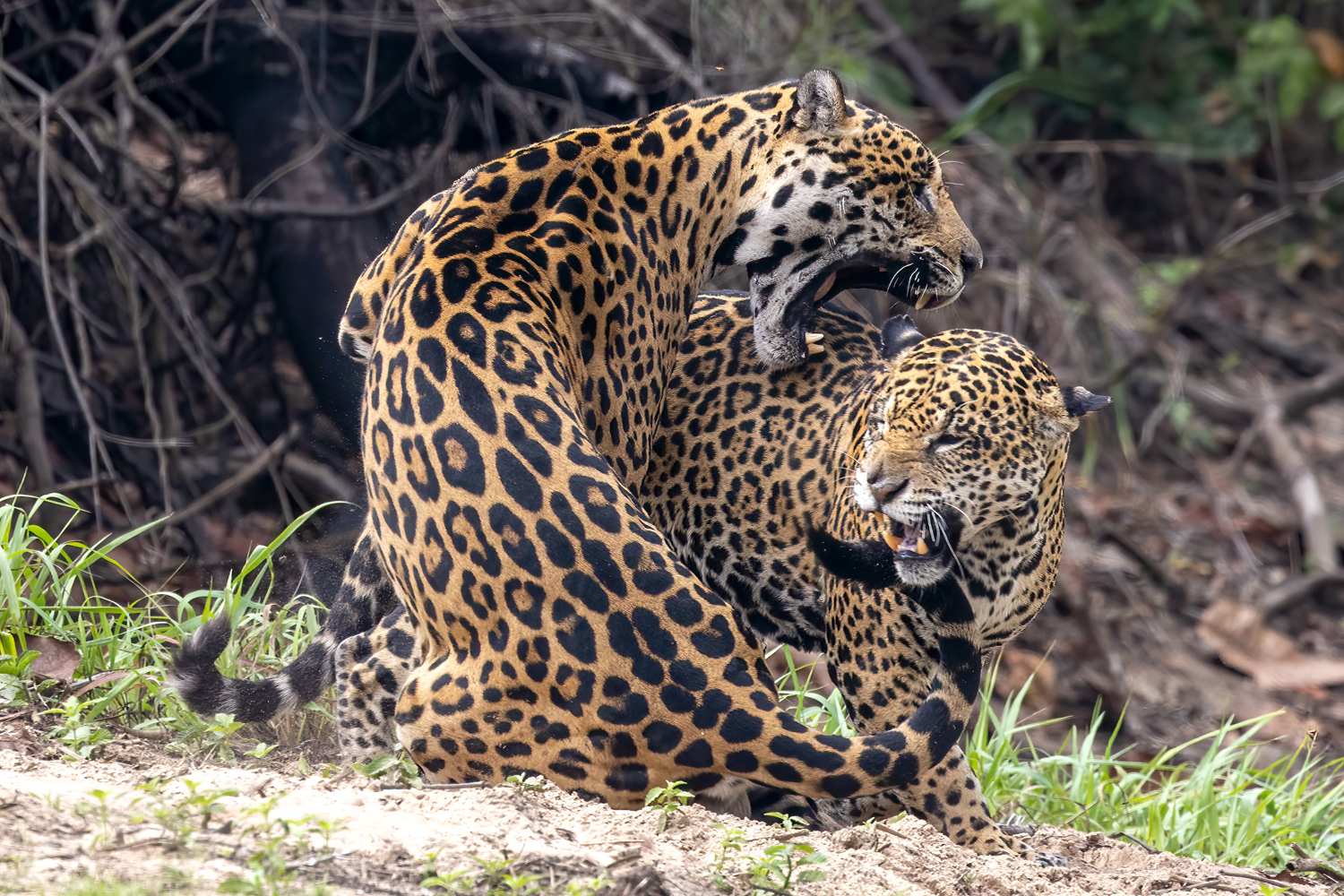
After five adrenaline-pumped days on the river, we say ‘good-bye’ to Porto Jofre. Although our time with the jaguars has come to an end, our time taking pictures has not. The Pantanal has more in store for us. We leave the lodge early so we can stop at a beautiful landscape location as the sun is rising. We spend the morning stopping at various locations to photograph a jabiru stork nest, feeding roseate spoonbills and sometimes we are lucky enough to come across more hyacinth macaws. We arrive at lunchtime at our final lodge. There are no more boat trips. We are now operating at a more relaxed pace. The early afternoon is spent downloading images and charging batteries. There are several large waterholes on this property that are full of caiman, capybaras, and birds of all kinds. The final hours of the day are spent photographing these animals. We are perfectly positioned for the magnificent sunset that follows.
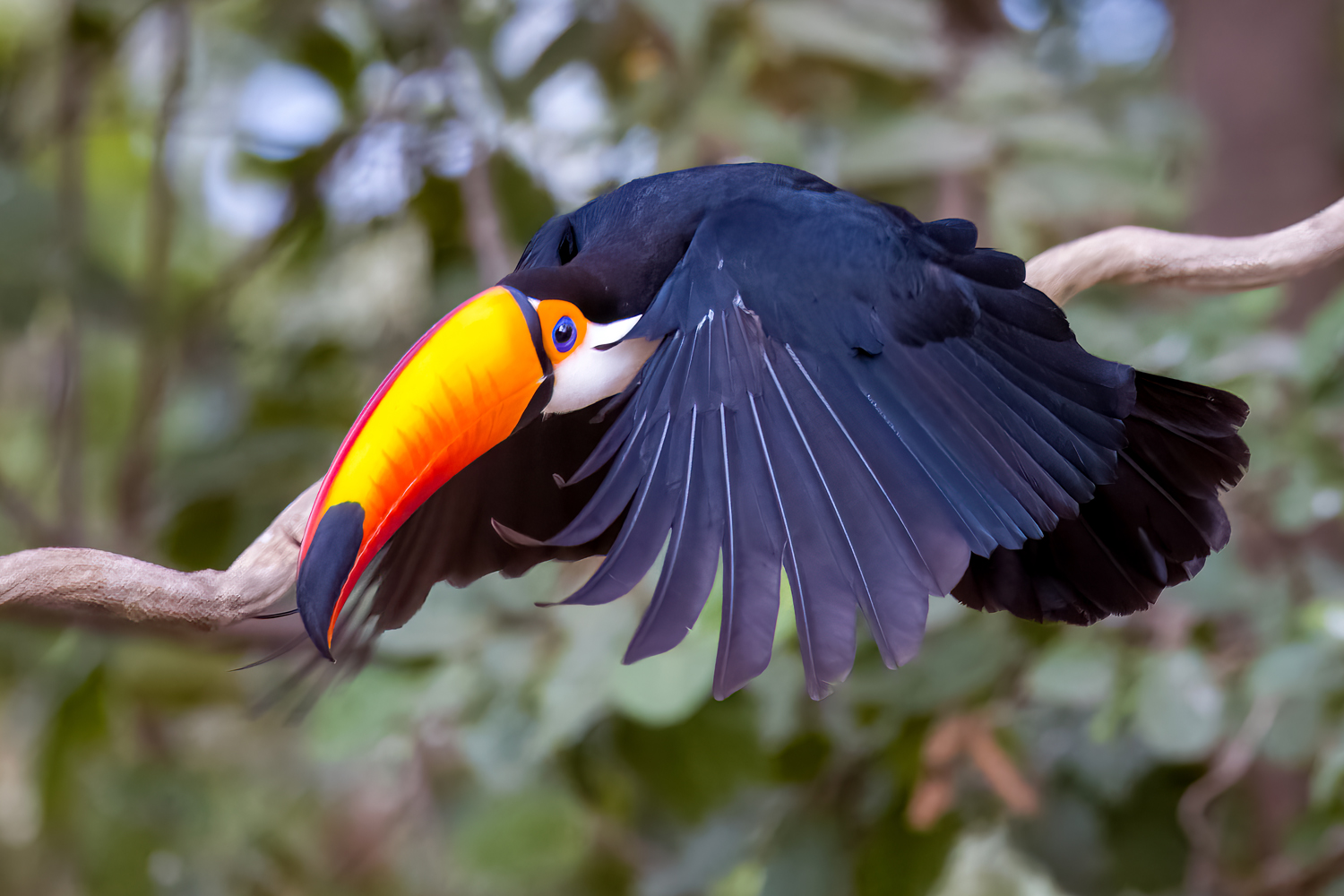
In the morning, the freshly stocked feeding station is crowded with birds both on top and below. The iconic toco toucan, with its huge yellow bill, white throat and iridescent blue eye ring, shares the feeder with chestnut-eared araçaris, great kiskadees and crested oropendolas, while the ground beneath the feeder has a family of bare-faced curassows, dozens of yellow-billed cardinals and three species of dove feeding on rice. More great images of brand-new species. The dirt driveway from the lodge back to the Transpantaneira is three kilometers long. On our way out, an ostrich-like rhea commands our attention. He is not alone. Sixteen babies follow him everywhere. We finally end back in Cuiaba for a great final meal in a traditional Brazilian restaurant.
Brazil’s Pantanal is a magical place. Every year, mother jaguars bring their cubs out to the river, and they become accustomed to the boats. As they grow, they accept the presence of the boats as simply a normal part of their environment. The jaguar tour to the Pantanal is one of those wildlife encounters that gets better every year. The jaguars don’t give the boats a second thought as they continue to hunt, mate, and raise their cubs with barely a glance cast in our direction. Add to that the birds, mammals and other animals that are so easily photographed and it is truly a once-in-a-lifetime experience like no other and is not to be missed! Next July can’t get here soon enough!


